- Oct 30
- Drug Addiction Treatment
Addiction can take hold of someone at any period of life. However, there are some times when people are more vulnerable to the lure of substance abuse. For many individuals, college is one of those times. Between rigorous new academic requirements, living on their own and being exposed to numerous brand new social circles, college students are at risk for developing an addiction regardless of their prior knowledge of or relationship to drugs and alcohol.
With the right awareness, college can be a transformative experience that sets a young adult on the path to success. Without it, the path they head down might be toward lifelong addiction. Understanding the risk of addiction and how it can affect students is paramount for those who are college-bound themselves as well as the people who care about them.
Drug Use and Addiction on College Campuses
It’s no secret that one of the new experiences on almost any college campus is being exposed to alcohol and drugs. It’s a major plot point in enough summer comedies that both parents and students may consider the possibility with some trepidation. Some schools have codes of conduct that expressly prohibit drinking and substance use, but these agreements may not carry the weight parents and administrators hope.
The Substance Abuse and Mental Health Services Administration (SAMHSA) released their latest data on substance abuse in college students in 2016. The report presents statistics on full-time and part-time college students ages 18 to 22, and the numbers are worrying. These are the numbers to know:
- More than 30% of full-time students took part in binge drinking during the previous month.
- About 20% of students had used an illicit drug during the previous month.
- On an average day in the year preceding the survey, 2,179 full-time students took their first drink of alcohol.
- On an average day in the previous year, 1,326 full-time students tried an illicit drug for the first time.
These statistics demonstrate the disturbing number of young adults who opt to try alcohol or an illicit substance every day, but even these numbers only account for the first time use. This crucial finding helps illustrate the pattern of ongoing substance use:
- On an average day, 1.2 million students drank alcohol, and nearly 704,000 used marijuana.
Given that the study represents the habits of 9 million full-time students, it’s clear that college kids are partaking in substance abuse at alarming rates. Interestingly, part-time students do not display significantly lower levels of this behavior.
Binge drinking is one of the most perilous and most common forms of substance abuse on college campuses. The 2017 National Survey on Drug Use and Health (NSDUH) reveals that, of the students who drank alcohol in the past month, nearly 35% reported binge drinking. Binge drinking is defined as having five or more drinks on one occasion for men and four or more drinks on one occasion for women. This type of risky drinking can lead to alcohol poisoning, as well as behavior that harms others, such as assault.
The problem of drug and alcohol abuse on college campuses has been a constant since these types of studies were introduced. Finding out why college students are so susceptible to substance abuse is key to preventing it.
Why Students Turn to Drugs
Every student has their own reasons for turning to drugs or alcohol. These reasons are varied and most students experience more than one before they decide to try a drug or start drinking to the point of abuse. These are five of the most common factors in college student drug use.
1. Curiosity
College is often the first time young adults feel free to “let loose,” and this newfound freedom is usually backed by a strong desire to try new things. Unfortunately, drugs and alcohol tend to fall into this category. People don’t set out to get addicted to any substance. Addiction usually starts with consumption just to try out a new sensation.
New college students are experiencing the end of adolescence. Their brains are still not fully developed, which affects their decision-making abilities. In situations where an adult brain would weigh the options and decide not to take a new type of drug or have a second drink, a college student’s curiosity can easily get the better of them.
2. Peer Pressure
Many parents and authority figures recognize the dangers of peer pressure and take measures to ensure young adults don’t give in to it. However, there’s simply no denying that if everyone else is doing something, it’s hard not to do it yourself. If a student has entered a situation where the majority of the people around them are drinking to excess, it becomes harder to resist when another student offers a drink.
Alcohol is the most common culprit for peer pressure because it’s so socially accepted. Marijuana is another drug of note because of its increasing state-level legality.
3. Stress
College students are experiencing a totally new format for their education. They move from rigidly structured classes and activities to having to create and follow their own schedules. About 43% of full-time undergrads are employed, adding yet another source of stress to their plate. Alcohol and marijuana are both marketed as a means of relaxation, making them appealing to some college students who feel overwhelmed.
Many students don’t realize that drugs and alcohol are dangerous and unhealthy paths to relaxation until they start skipping morning classes due to hangovers or failing to complete assignments because their motivation is being sapped by marijuana. It’s imperative for college students to learn stress and anxiety management techniques so they are less tempted by the temporary solution of intoxication.
4. Availability
Unfortunately, one of the factors in the prevalence of college drug abuse is that the substances are available. There is always someone with an older friend willing to buy alcohol, and parties may be a popular place for local drug dealers to stop by. Not every party is a hotbed of substance abuse activity, but it’s likely that a student will be offered drugs during at least one gathering. Even without someone pressuring them, students may take the sheer availability of a substance to mean it’s not that dangerous.
5. Self-Esteem
College students don’t always have a well-formed self-image, and any issues with self-esteem may be exacerbated by the variety of new social situations they are expected to navigate. If a student makes friends with a group of people who are frequently intoxicated, they may start to feel like they are more fun or interesting when drunk or high.
Common Drugs on College Campuses
Theoretically, students can be exposed to any type of drug, including the life-threatening opioid fentanyl. However, some substances that are particularly common to college campuses. Here are five of the drugs a student is most likely to encounter during their college days.
1. Alcohol
Unsurprisingly, alcohol is the number one drug of abuse on college campuses. It’s uniquely positioned for abuse because of its pervasive role in our culture. It is completely legal for anyone over 21, and students see advertisements glamorizing it wherever they turn. In many states, you can walk into any gas station with your valid ID and walk out with enough alcohol to get multiple people dangerously drunk. Some states even allow hard liquor to be sold in the grocery store.
Even if a student is not yet of age, alcohol is not hard to obtain. Alcohol is almost a focus at parties, especially in fraternities and sororities. If a student wants to get drunk, they likely won’t have to look far to find a free or cheap source of alcohol.
2. Marijuana
Marijuana use among young adults has spiked alarmingly over the past few years. A new study concludes that around one in five students will become first-time users of marijuana, whereas the chances of first-time use are closer to one in ten if not attending college. Although marijuana remains illegal at the federal level, multiple states have set up thriving markets for the drug. The normalization of marijuana has led to it achieving a status near alcohol’s on college campuses.
Marijuana is harder to hide than alcohol due to its intense odor, so it’s less common to find in dorm rooms and on campus. In legalized states, it’s easy to get someone over 21 to purchase marijuana for you, but in other states, students must engage with drug dealers who often peddle other, more dangerous substances.
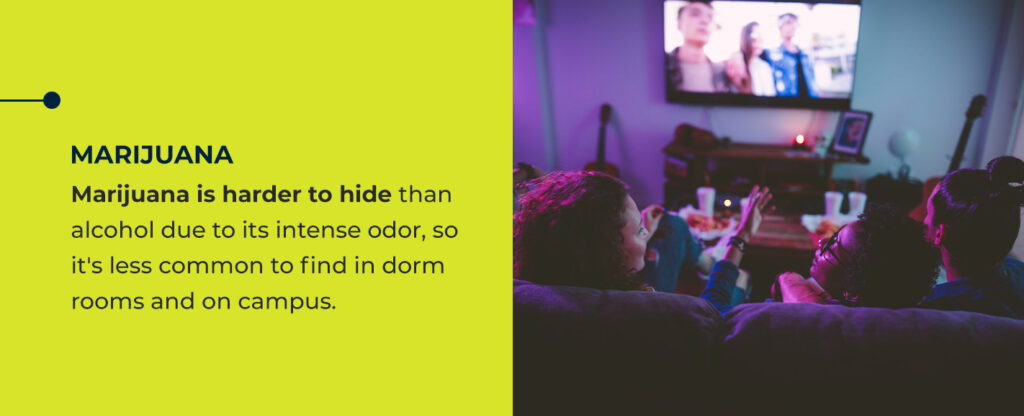
3. Prescription Stimulants
One worrying trend is students using prescription stimulants for non-medical purposes. Drugs like Concerta®, Ritalin® and Adderall® are prescribed to people with attention-deficit/hyperactivity disorder (ADHD) and help them live their lives more normally. College students without ADHD use prescription stimulants as “study drugs” to study longer with greater focus. Young adults ages 18 to 25 are responsible for 60% of non-medical use of the drug Adderall.
For the most part, students who abuse these prescription drugs get them from other students or family members. It’s also fairly simple to get a prescription for the drugs, as the symptoms of ADHD are easy to memorize and report to a physician.
4. Cocaine
Cocaine is one of the substances for which we have little data on college students specifically. While cocaine use in the general population has been steadily declining, there is some evidence that it may actually be increasing among college students. One of the largest studies on the matter indicates that by the end of the fourth year in college, 36% of students had been offered cocaine and 13% had used it.
Cocaine is especially popular in fraternities and sororities. It’s also more common among students who work in food service.
5. Benzodiazepines
Benzodiazepines, namely Xanax®, are becoming a serious issue on college campuses. Also known by its generic name alprazolam, Xanax is the most commonly prescribed psychotropic medication in the United States. This medication is what’s known as a “downer” and is used illegally as a means of relaxing and alleviating stress. However, most college students are unaware of the medication’s side effects and the extreme difficulty of recovering from this type of addiction.
Like prescription stimulants, college students usually get benzodiazepines from someone who has a legitimate prescription and is selling off their supply.
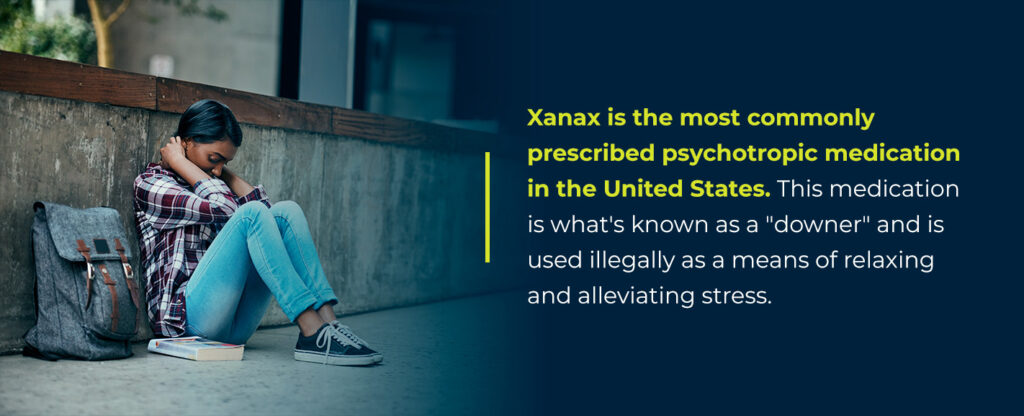
The Results of Addiction in College
College students often don’t grasp the consequences of substance abuse and addiction while they’re in school. They may feel like their addiction is under control and that they can stop at any time. Many assume they will be able to stop using drugs or drinking once they graduate and move on to adult life. Unfortunately, this is rarely the case once substance abuse begins. Here are three areas where the effects of substance abuse make a significant impact.
1. Health
Students may assume that drug and alcohol use won’t affect them physically because they are young and healthy. While youth and a healthy body may delay the onset of serious health problems, there will be inescapable physical consequences to continued substance abuse. Here are some examples of what different substances do to a student’s health.
- Alcohol: Drinking affects every body system and is the third leading cause of preventable death in America. Alcohol can cause irreparable damage to the liver, heart and brain in particular.
- Marijuana: Evidence on the effects of marijuana is scant due to its federally illegal status, but at least one study has linked heavy use to significant IQ loss. Marijuana extracts have also been linked to worsening symptoms in people with mental disorders such as schizophrenia.
- Prescription stimulants: These drugs can cause high blood pressure as well as permanent damage to blood vessels, the liver and the kidneys.
- Cocaine: Cocaine causes significant damage to multiple organs and the gastrointestinal tract. Its use is associated with toxic effects on the heart and can increase the risk of stroke.
- Benzodiazepines: Abusing benzodiazepines causes issues with coordination and judgment, and can make users irritable or hostile. These drugs may also cause memory loss.
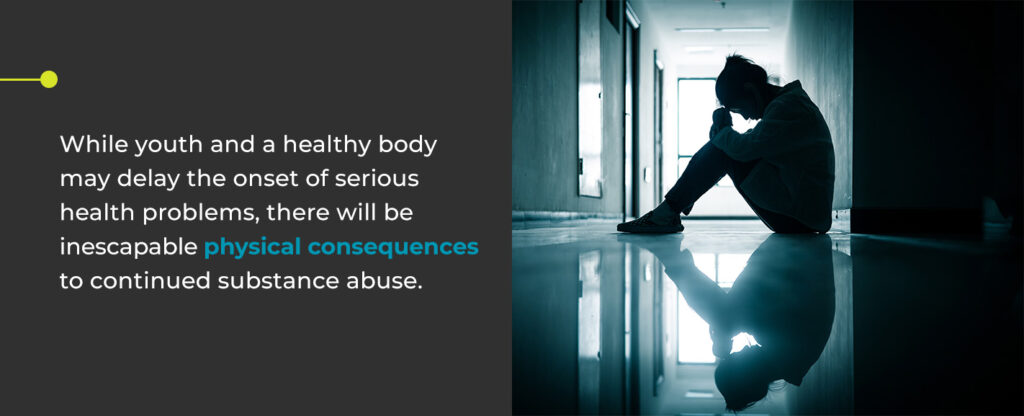
These are just a few of the health effects a student might see from prolonged drug abuse. If they are combining any drugs with each other or with alcohol, their risk of overdosing multiplies.
2. Academics
Graduating college is hard enough for a mentally and physically healthy individual. The graduation rate for students getting a bachelor’s degree at a four-year degree-granting institution is about 60%, and a student’s chances of graduating are greatly reduced by drug and alcohol abuse.
Part of the danger is damage to the brain, often caused by inflammation. Brain damage from alcohol, for example, can hinder a student’s ability to learn by impairing short-term memory and organizational components of the brain.
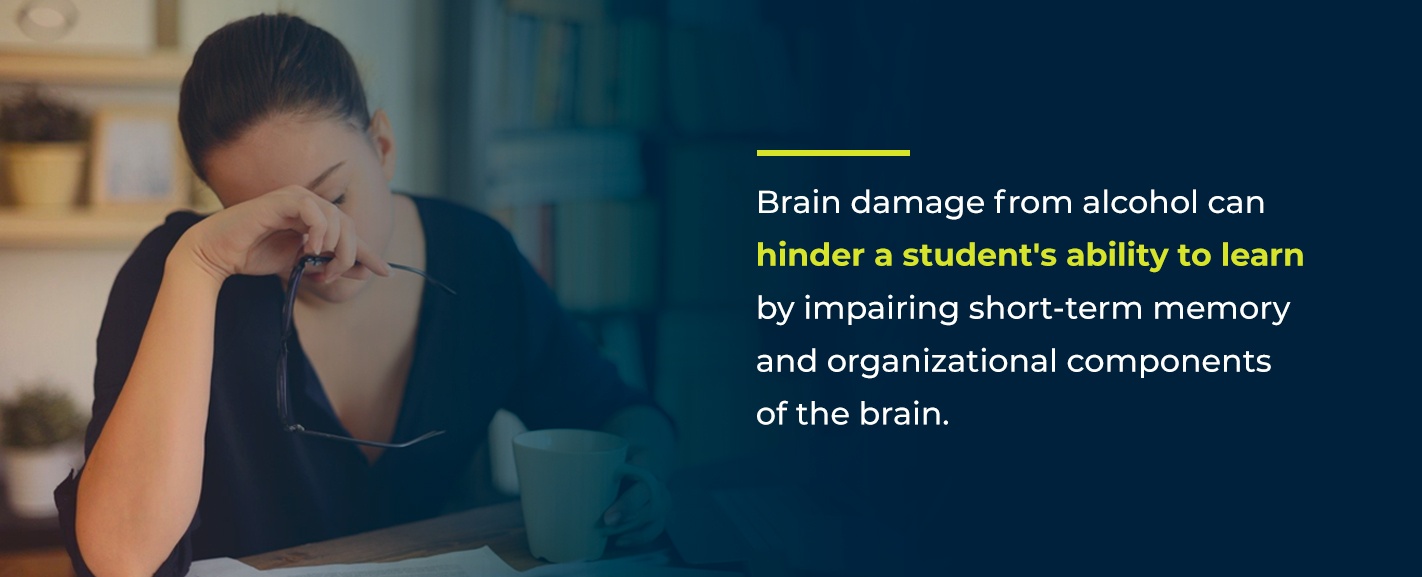
Another element is the loss of motivation drugs can produce. With the exception of prescription stimulants, each of the drugs previously discussed can kill a student’s drive to do the work they need to succeed. If a student is stressed or anxious, they may attempt to quell their emotions with one substance or another — a common behavioral element in the development of addiction.
3. The Law
Although many students don’t even consider it, substance abuse is largely illegal. Underage drinking is so common that most college-age young adults don’t bat an eye at the concept even though it could get them into serious legal trouble, including fines and even jail time, depending on the state.
Alcohol and certain drugs also alter consciousness in a way that makes an intoxicated person more likely to commit a crime. A normally well-behaved student might get drunk and vandalize school property or get into a fight. At worst, intoxication might lead to violence against someone else.
Getting in trouble with the law due to substance abuse is a huge red flag in terms of addiction, but it can also take away everything a student has worked for. They may be expelled as a result of their run-in, and jail time will make it harder to secure a good job if the student does end up graduating. Even a short series of poor decisions related to substance abuse can follow a college student throughout their lifetime.
 Identifying a Drug or Alcohol Problem
Identifying a Drug or Alcohol Problem
Whether you’re concerned about your own use of a substance or are worried that a friend is going overboard with drugs or alcohol, you need to be able to identify the signs of a burgeoning addiction. The Diagnostic and Statistical Manual of Mental Disorders, fifth edition (DSM-5) uses the following 11 criteria to gauge the presence and severity of a substance use disorder.
- Hazardous use: The individual has used the substance in situations that endangered themselves or others. This can include actions like driving drunk, blacking out or overdosing.
- Interpersonal problems: Substance use has caused turmoil with family or friends.
- Major role neglect: Substance use has caused a failure to meet expected responsibilities at home, work or school.
- Withdrawal: After abstaining from the substance, the individual experiences symptoms of withdrawal.
- Tolerance: The individual must consume more of the substance to obtain the same level of effect.
- Increased consumption: The individual is consuming more and more of a substance at one time, or continues use of the substance for longer than intended.
- Inability to quit: The individual has attempted to reduce consumption or stop using the substance without success.
- Time lost to consumption: The individual is spending a significant and increasing amount of time using the substance.
- Health problems: Substance use has led to psychological or physical health problems, but the individual continues consumption regardless.
- Activities given up: Substance use has replaced one or more activities the individual used to enjoy.
- Craving: The individual experiences a strong desire to use the substance and thinks about it frequently when not using.
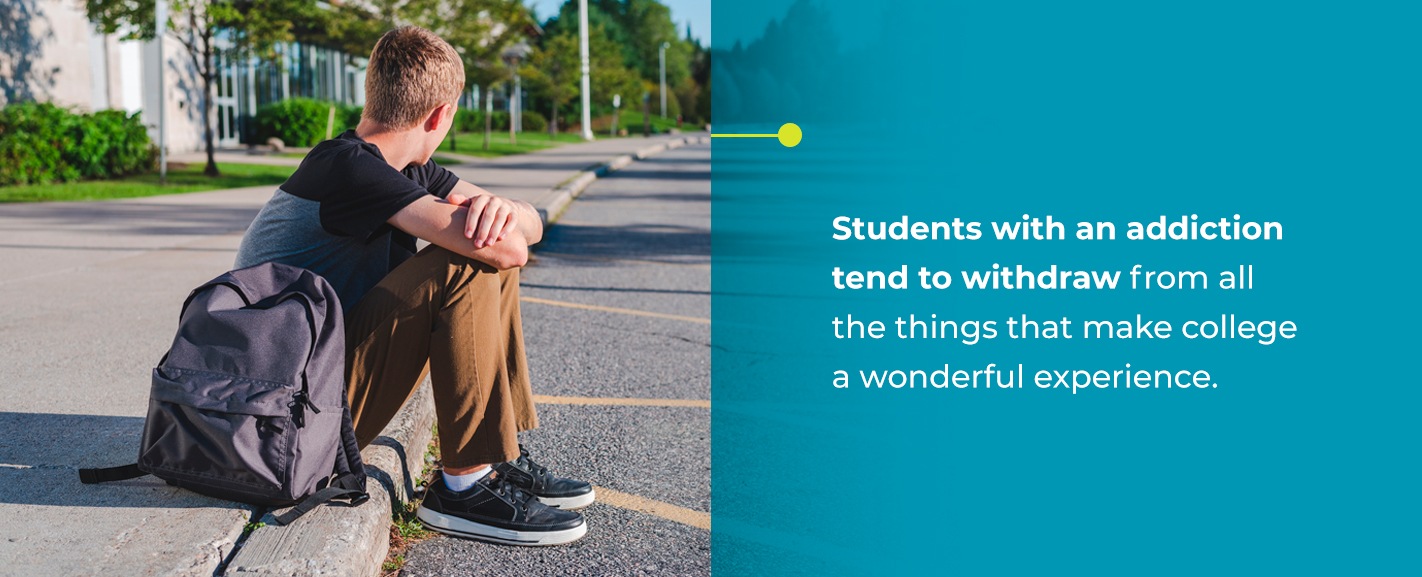
Get Back on Track With Gateway
College is equal parts stressful and exciting, and many students aren’t taught how to handle their newfound independence responsibly. If you or someone you care about is displaying more than three of the DSM-5 criteria for substance use disorder, it’s time to get help. Without treatment, any addiction can spiral out of control and rob students of the benefits of a college education.

Gateway’s many substance abuse treatment programs address addiction in any individual with no judgment and no discrimination. Anyone can struggle with addiction. What matters is that they get the compassionate, evidence-based treatment that offers the best chance at sustained recovery.
If you’re ready to start on the path to recovery or just want more information about addiction and our treatment options, the first step is to get in touch with Gateway. Get immediate answers on the phone at (877) 505-4673, talk to us through live chat or leave us a message via our contact form. Gateway teaches the skills you need to live addiction-free in college and beyond.


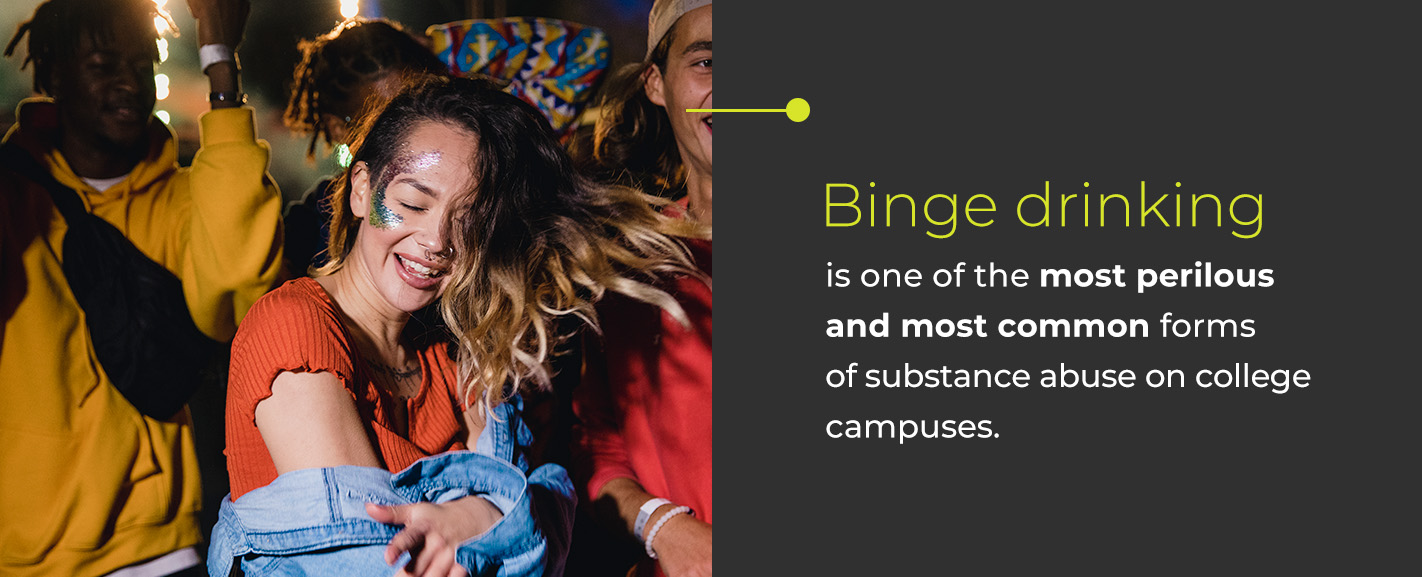

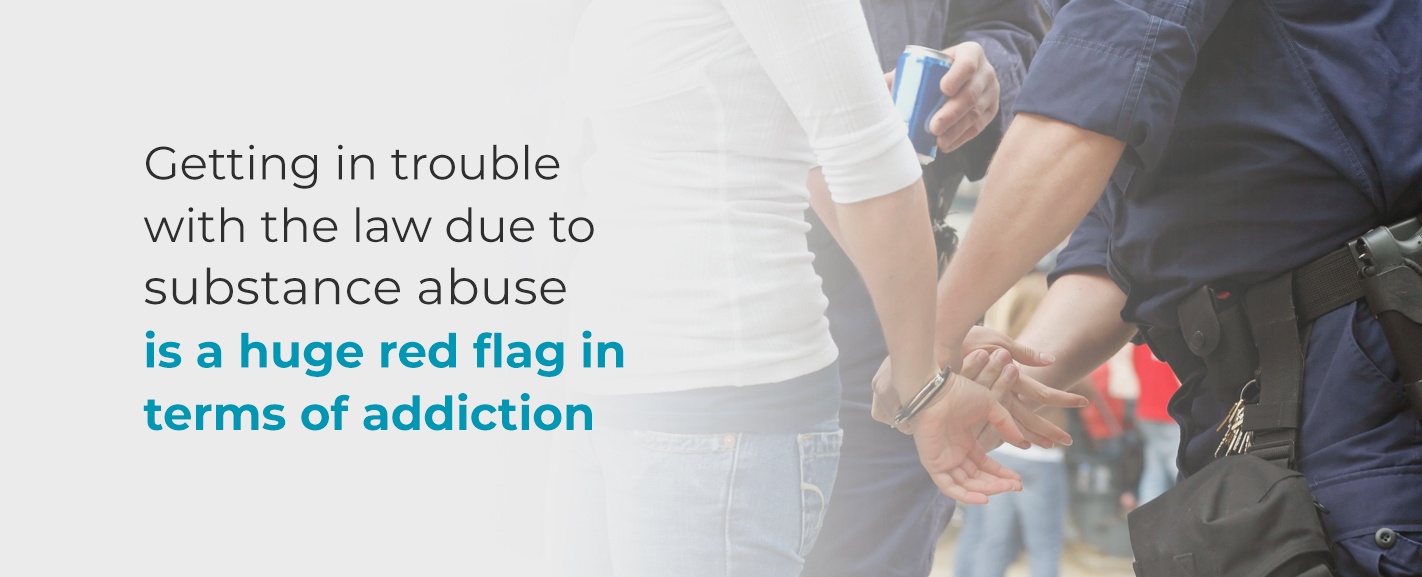 Identifying a Drug or Alcohol Problem
Identifying a Drug or Alcohol Problem
